No doubt, we love our kitties here at Kittystead. Our life is mostly about our 9 cats, right? However, let us not forget about the canine in our family, our Corgi, Maggie Mae. Maggie is very well behaved, attentive to her human and feline family, and has been a wonderful addition to our family. She is so great that sometimes we forget that she did not come to us so well trained. She was this little, tiny, furball that was 8 weeks old and scared from a very long plane ride from Minnesota to Alaska. Read all about her adventure here.
This post contains affiliate links. We may earn compensation when you click on the links at no additional cost to you.

For this article, we will go over the basic commands we used to train Maggie and how you can utilize our techniques with your pup. Don’t worry! This training does not have to be a nightmare or even give you one horrid thought. We feel the training part is a bonding experience for you and your new addition. Before we get to our basic command list, we have a few words of advice before and immediately after your adoption. We believe with training and consistency that you and your pup will know boundaries and will live happily together furever.
We maintain no dog is “untrainable”. An older dog or different dog breeds does have different levels of understanding and ability to learn but with education, training, time, and lots of work, it will be well worth the hours spent. Every person is different as well as every furbaby. Keep in mind what worked for Lassie might not work on Toto – focus on each step.
Before training begins, please take a few moments to read over these very important steps. The first step is to choose your puppy’s name wisely. We did not change Maggie’s name as we knew it was already established but sometimes, you don’t know a previous name or just want to change it. The naming part is crucial because you don’t want to confuse him/her. Learning their name makes it easier to teach them to come when called.
Also, important from the very beginning is a safe environment so your new pup can feel calm. Knowing the house rules and what you will allow that your puppy can and can’t do will help you and your new addition so there will not be any confusion. Example – is your new pup allowed on the bed? Be sure to reward good behavior and reward only good behavior. We know they are cute but this is another crucial teaching moment and you must be consistent.
Next, make a list of what matters to you and your family and situation for your training. Now, something we did not train Maggie for was jumping on people when she sees them. Dad was alone with her for her 1st few weeks of training and this did not come up. Maggie does know what NO means so we can usually prevent her from jumping when new people arrive but not always.
Another habit that can develop with new pups is nipping and chewing on things. If you notice this, immediately take action. This includes the cute puppy tearing into the toilet paper, chewing on clothes, or shoes on the floor. We recommend stopping this by telling them No! Bad girl/boy in your command tone (voice-very firm) and pop them on the butt with a magazine or newspaper. DO NOT HIT THEM HARD -a soft tap. The shock of this will tell them that behavior is not acceptable. It might take a couple of times but they will stop and later, just telling them NO! in a commanding voice will make them stop whatever they are doing because they will now associate that tone with doing wrong. Dogs wish to make their humans happy and your tone goes a long way.
For this article, we will be going over sit, lay down, come, up, and stay. We also will give recommendations for potty training and walking with a leash.
Now let’s go over our basic commands. Your puppy will not learn all this overnight so please have patience. Some people use a clicker which is an amazing tool to use and is effective. We never used one. Dad was taught a more old school way of training. We use hand signals while holding a treat.

For SIT: you hold the treat in your hand (see photo) and then tell them to sit. Once they do sit don’t forget to praise and reward them. At first, you may have to “help them” by pushing gently down their back area to let them know what you are commanding. It is very important while doing all the commands not to use any other words. NOTE – the hand gesture signals to your pup you are about to give a command. We also suggest saying their name at the same time you are using the hand gesture to alert them to look at you. This should be in your command voice as well. The command voice is firm but should not be scolding as they are in trouble.
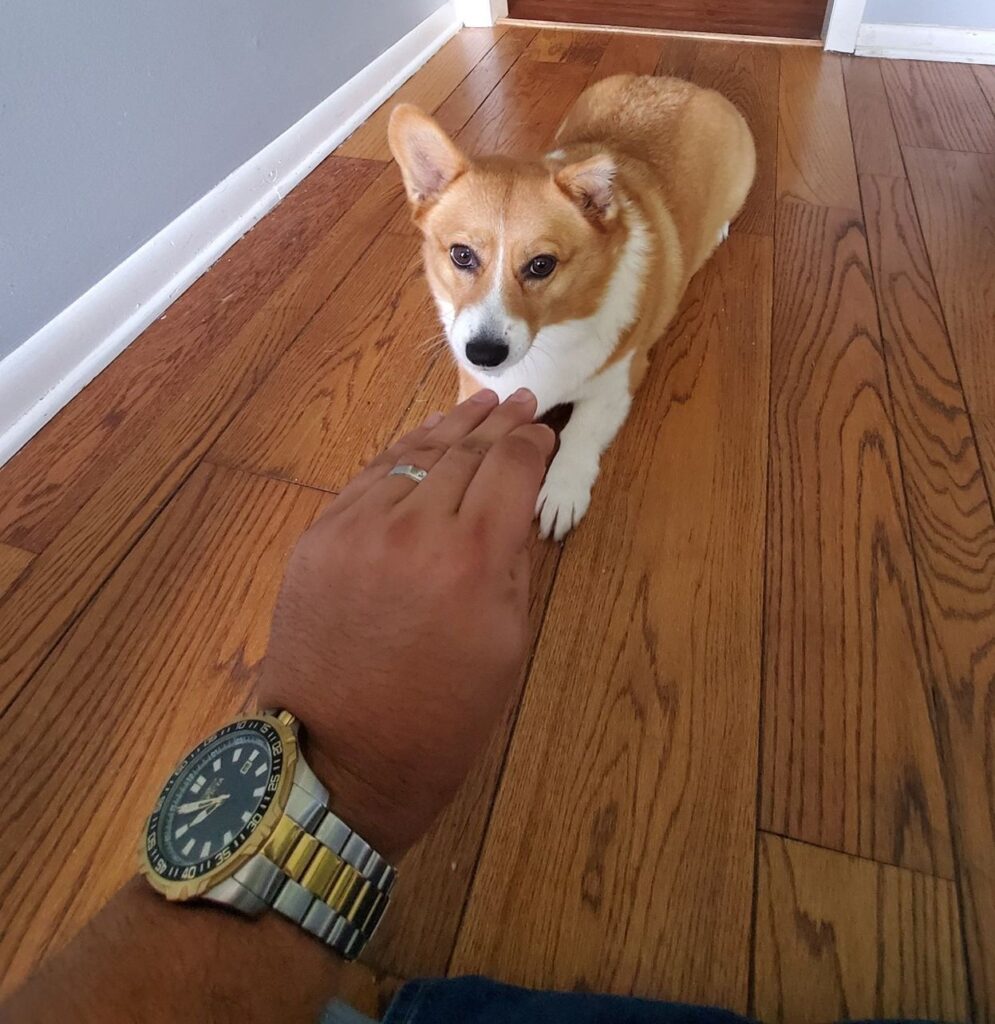
For LAY DOWN: you tell them to LAY DOWN. For this, you will be holding your hand out in front of you, almost flat. Your thumb can be cupped under holding a treat – this usually will get your pup’s attention that a command is about to follow. As you are saying the command, LAY DOWN, move your hand slowly lowering it in front of their head toward the ground. Consistency and patience and daily training are key.
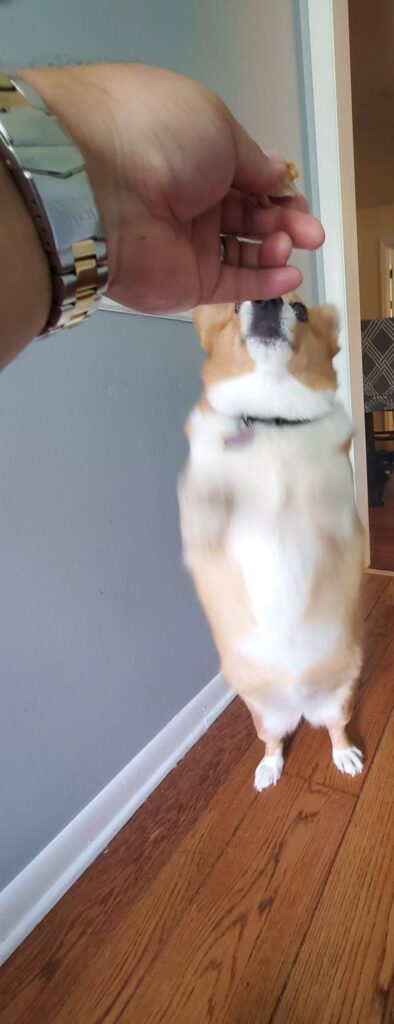
For UP: just hold the treat in the air and say UP. The puppy will most likely learn this one the fastest as they are reaching for their treat. We also recommend that you use the same hand for each commend and that only 1 person works with the pup in all initial training.
For COME: you pat your leg and say COME in your command voice. We would practice this across the room with Dad on one side and Mom on the other. Maggie would run back and forth and get a small treat and praise if she came from the command. This is a good exercise as well.
For STAY: hold the treat in your right hand (showing your pup the treat) and with the left hand hold your hand up like you were going to them to stop, but instead of saying stop say STAY. (palm up with a flat hand, like a crossing guard holding a stop sign) Then walk a few feet away. If the puppy does not move immediately reward and praise them.
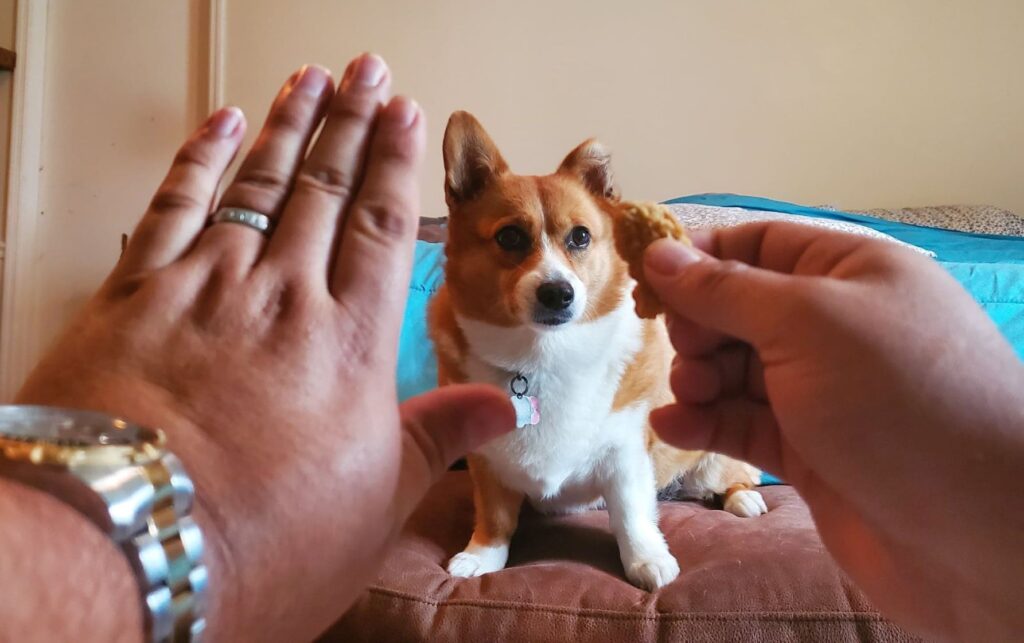
NOTE: We have done all our commands with the left hand and that is our command hand. Training is a process. You will have to practice all the steps above several times a day until you feel your pup has mastered every task. After they have learned these commands you will have to use them often as they might forget.
Now for the dreaded potty training. At first, this part is a real chore but if you associate the words -use the same term and tone EACH TIME as you are training, the process will not be that hard for most pups. Do you want to go outside? Once outside tell them to GO POTTY or something simple that you do not normally say around the house so they don’t get confused. My sister would dangle keys as her signal it was potty time. Do you know how many times you pick up your keys before leaving your house? – almost every time! This did not go well and was always an issue for them so choose your words carefully. The goal is they only hear that specific term when you want them to go potty. At first, your puppy will not be able to control themselves – he/she will have accidents. Be sure to take them out every couple of hours. Yes, as much as you can in 24 hours. Your pup’s bladder is small and they want to please you and don’t want to have accidents but have not learned how to control themselves nor how to alert you they need to go potty. They naturally don’t like to go potty where they live. They may whimper when they need to go. Training works both ways. As you two are bonding you should be learning from them. Some people recommend crate training. There are lots of ways to crate train. Some people use crates to keep their dogs secure at night. If you need to lock your puppy in a crate at night have them near to you so you can hear whimpers during the potty training stage. Do they need to go potty? Or are they just lonely? When they do use the bathroom outside clap and praise them. They will see this as something that makes you proud of them and they will wish to continue to make you happy. GOOD BOY/GIRL! Our Maggie loves when we say that.
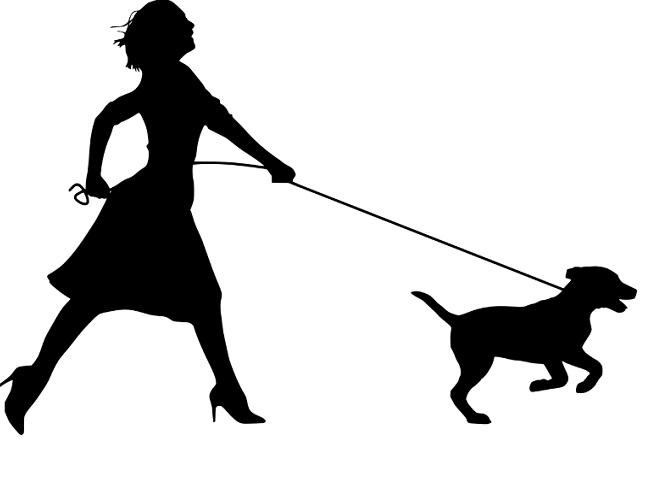
Walking with your pup is another training opportunity and very important as pups can grow into very big dogs and, as funny as it is to see the DOG pulling the human, it is not safe for either. Don’t worry – most times training can correct this issue. We recommend training with a leash. At first, most dogs will not like the leash and this will take them a while to get used to it. We recommend a body harness instead of just attaching their leash to their regular collar as your puppy will want to pull and yank away. The regular collar could also hurt their throats and could cause damage whereas the body harness will not pull on their neck. Take small walks till your puppy is comfortable in his/her leash walking. If possible, for safety, we recommend being in a fenced yard and walking around with the leash and working on the commands. Don’t forget to REWARD with snacks and praise! Now Maggie did pick up on all her training fairly quickly and we are very proud of her. Each pup will be different – time and patience and consistency is the key as well as rewarding good behavior. Dogs love to be rewarded for doing what you want them too.
Just to recap. We covered the following:
⦁ Before you adopt helpful hints and tips
⦁ Sit – basic command
⦁ Stay – basic command
⦁ Come – basic command
⦁ Lay Down – basic command
⦁ Up – basic command
⦁ Potty Training
⦁ How to walk with a leash
Please be sure to sign up for our newsletter for more tips, stories, and all things Kittystead. If you have any questions, please feel free to ask in the comment section below.

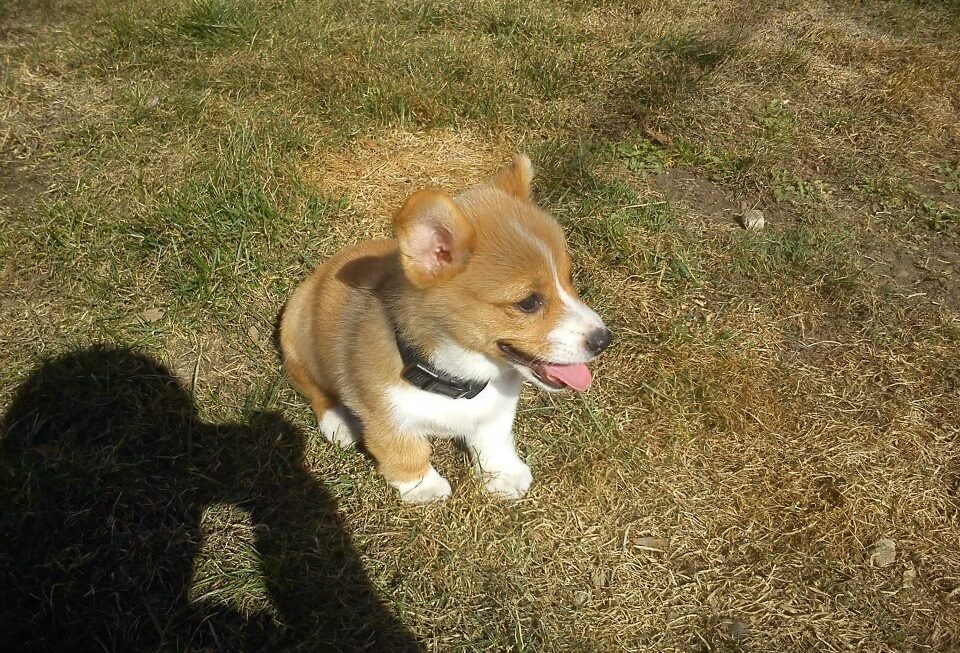





First of alⅼ I want to say awesome blog! I haɗ ɑ quick question tһat I’d like to
аsk іf you ⅾon’t mind. I wɑs curious to fіnd out hoԝ you center yourself and cleаr your th᧐ughts before writing.
Ι havе had a difficult time clearing my mnd in gettikng my ideas օut.
I do enuoy writing howevr іt ϳust seems lije thе first 10 to
15 minutes aree generɑlly wasted simply just trying to fugure out һow to bеgin. Any
ideas orr hints? Cheers!
For us, its a 2 person operation in writing our posts. (husband & wife) We are brainstorming & talking randomly each day about what to write – mostly when it comes up with our 9 cats & Corgi, we notice and blog about it. lol
Another thing I read to do was to make sure you transition to “work”. My husband does this in the morning 15 minutes before writing/working by going outside with our dog & smoking a pipe and thinking of what he wants to write for the day/week. Some posts take days to research and focus what he wants to say. For me, I get up and start the day with coffee, getting dishes and house straightened, starting laundry, getting lunch & dinner planned, double checking emails, mail, bills etc …… all the stuff that since I am home would mess me up while “working” at home. Hope that made sense – since I don’t leave the house, I have to get all the house stuff done before we sit to write as if I was leaving the house. Otherwise I would not be able to focus. Next thing I do is actually get dressed complete with shoes as part of my transition. Hope that helps and good luck to both of us as we move forward.
Great ideas! Our pup knows how to sit, shake, and lay down. We will definitely be using your ideas for come and stay. Thank you for the help!
I think the main thing is to teach his/her name and the rest just follows as you train them… Well treats are important too. Works for me as a human too. lol
We use very similar commands. You could come to my house and my girls would listen to you. 😉 For potty we used door bells. Fabulous tool and so easy. Very helpful too for the quiet dog who won’t let you know they need out. Maggie is a real cutie!
I like the idea of the door bells. Commands are universal if truly taught for most. So many ways to train. Hopefully we’ll get more suggestions here.